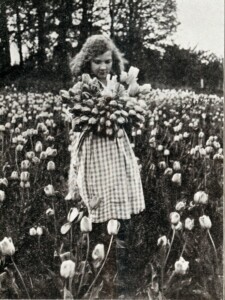
Photo published in Oregon Bulb Company Catalog taken at company farm in West Salem and captioned “In Sheaves for the Packing Shed.” WHC Collections 82.42.10.8.18
Flower Culture has deep roots in the Mid-Willamette Valley
“There are those who called him a dreamer…” No, these are not the lyrics penned by a certain English rock musician, but rather part of the 1940 eulogy of for W.C. Dibble. Dibble’s dream? To make the Salem-area the center of commercial bulb cultivation in the country, rivaling production in Holland.[1] It may be hard to glean from the grainy, black and white images of his companies’ marketing materials, but he did gain national fame[2] in the 1920s for operating the largest bulb farm in country, combining both production and agritourism in his business model. This dream echoes today, in living color, as many mid-valley fields picturesquely fill with blooms and eager photographers.
Wilson Colby Dibble
I was introduced to Mr. Dibble’s story through a large collection of outdated bulb and seed catalogs surplused from the State Library of Oregon’s collections sometime in 1982 and transferred to the Marion County Historical Society.[3] A quick flip through the box belied the bland catalog entries. Not just seed catalogs, but a fascinating window into wholesale and retail business in Oregon from the 1920s through the 1950s, the sometimes-flamboyant personalities of the entrepreneurial men and women involved and their passions for flowers.
Wilson Colby Dibble, eulogized as the “father of Holland bulb growing in the Pacific Northwest,”[4] was born in New York State in the midst of the Civil War to a family known for their breeding of Hereford cattle.[5] Despite this lineage and relocating to a Nebraskan farm at a young age, Dibble’s early career was as a newspaper man and politician.[6] After a brief stint in Oregon,[7] where his daughter Carol (who would herself become a newspaperwoman) was born, the family relocated to Palo Alto for a decade.[8] Upon his return to Oregon, Dibble took up farming in earnest. His farm in 1917, if you can imagine, was located on North Liberty street at about the site of today’s new police facility.[9] Dibble was a card-carrying member of the Marion County Potato Growers Association[10] and listed as a grower and booster of loganberries.[11]
Staring the Largest Tulip Farm in the Country
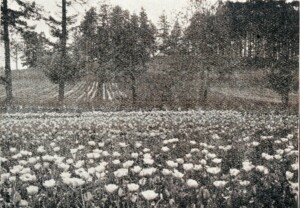
Photo of Oregon Bulb Farm in West Salem. Published in company catalog. WHC Collections 84.42.10.8.19.
Where the inspiration for tulip farming came from is a bit of mystery, but in about 1915,[12] Dibble teamed up with berry farmer William C. Franklin[13] and began experimenting with the commercial cultivation of flower bulbs with an initial investment of $20 for 500 bulbs.[14] After six years of efforts testing to see if the crop would be viable, they had put in six acres of beds on property about a half a mile west of Willamette River Bridge on Wallace Road[15] and became the largest Tulip farm in the country.[16]
It was a gamble. Up until then, no production in the United States had been able to rival Holland in the quality of bulbs produced on a commercial scale. Dibble and Franklin’s efforts provided evidence that it could be done. When W.H. DeGraff of a Dutch firm founded in the 1700s visited in the Spring of 1922, he was quoted (admittedly by Dibble) as saying “You can grow as good a bulb as we can…And…no other locality in the United States has so far shown like results.”[17]
As the company grew, they took on a new name – The Oregon Bulb Company. In 1923, they sold a million and a half bulbs,[18] largely by unillustrated catalogs and mail order. One such catalog in the WHC’s collections provides lists of bulb varieties with short description. You could have your pick of “Clara Butt – Soft salmon pink. A tulip of exceeding beauty,” “Professor Darwin – A glowing crimson red. Noticeable for a certain completeness of color,” or the “Gesneriana Major- Rich crimson scarlet. Flowers of large size on long, graceful stems.”[19] The bulbs were sold by the dozen or hundreds. A dozen would cost anywhere from .50 to 2.50, postage included. [20] In the early days of the company, the catalogs and advertisements featured tulips, narcissi, gladioli, lilies and dahlias. [21] In addition to bulbs, the company sold cut flowers to florists[22] and visitors to the farm, which was prominently featured in the yearly cherry blossom tours of area, drew upwards of 30,000 visitors to see the vibrant, blooming fields.[23] The idea of agrotourism was strongly promoted as beneficial to the whole region. As one 1920 Oregon Statesman article made special emphasis to note: “Steps will be taken so that tourists passing through will be diverted to the tulip farms and if the experience of California and other flower centers be duplicated, it means coming of many hundreds of visitors from other and distant parts of the country.”[24]
In 1923, the Oregon Bulb Company purchased 18 additional acres of land four miles north of Salem near Chemawa for additional growing fields.[25] This expansion, however, marked the beginning of the end for the partnership between Dibble and Franklin. Details are sparse, but Franklin severs ties with the Oregon Bulb Company in fall of 1923 maintaining his own bulb farm in West Salem,[26] and Dibble appears to have taken over the Pacific Highway site north of Salem.[27]
Salem Bulb Company
By 1926, Dibble had returned to his home farm (located on Wallace Road, just past the Orchard Heights road intersection and across from old partner Franklin[28]) and entered into partnership with florist C.F. Breithaupt to start the Salem Bulb Company. In the partnership Dibble grew a variety of bulbs (his slogan being “If it’s a bulb—we have it.”), and Breithaupt sold the flowers.[29] Business was good, and they were in good company. In 1928, bulb growers in the Salem region produced at least 12 million bulbs.[30] Dibble’s own successes had him leasing an additional 20 acres of property just a few blocks from the end of the West Salem Bridge which were furnished with landscaped demo gardens for visitors. Advertisements from this period encourage visitors at his home farm and this new location marked by “red Holland windmills.”[31] In 1930, the company was reorganized again, and they were back out growing bulbs on the Pacific Highway.[32] But that was likely the last good season. By 1934, public notices for defunct companies list the Salem Bulb Company.[33]
Mr. Dibble Died in 1940 after a lingering illness.[34] I am sure he would not recognize his old stomping grounds out Wallace Road, but might be delighted to find Tulip Lane NW, near what was his and Franklin’s first tulip venture.
Salem may not have lived up to the prediction made in a 1923 Oregon Statesman article that it would “always be the tulip center of the United states; of North America. Nature has so decreed.”[35] But as many flock each spring to Schreiner’s Iris Gardens or post selfies at the Wooden Shoe Tulip Farm, I like to think Mr. Dibble’s dream lives on.
Sources:
[1] Obituary – Oregon Magazine September, 1940 pg 4. WHC Collections 2008.038.172
[2] “Fame of Tulip Farm Extending – Oregon Statesman 02 Sept 1921 pg 3
[3] See WHC Collections 1982.042.
[4] “Benefactor of Oregon.” Oregon Magazine. September, 1940, pg4. WHC Collections 2008.038.0172
[5] Born 2 Aug 1863. A History of the Wheat Family in America. Volume 1. Brooklyn: Sials S. Wheat, 1903. (see individuals 151 and 161).
[6] Early biographies list his occupation as “newspaper correspondent. Elected superintendent of schools at Dakota County, Nebraska, Chairman of the Democratic Central Committee of Dakota County Nebraska (three terms) and member of the district congress (one term). A History of the Wheat Family in America. Volume 1. Brooklyn: Silas S. Wheat, 1903. (see individuals 151 and 161). See also obituary: 20 Sept 1940 pg 11 Capital Journal. WC Dibble, Pioneer Bulb Grower, Dies
[7] This was difficult to pin down. There are a number of mentions of a W.C. Dibble advertising for property trades in the 1890s in Salem papers (see example: 1891 Oregon Statesman 0 5Dec pg 2. To exchange – Ten acres within the city limits of Yankton SD for property in or about Salem. WC. Dibble 348 Front Street, Salem. ). I think this is him, because it fits with the birth story of his daughter Carol who is consistently identified as being born in Oregon in 1892 (see census data on Carol, 1900, 1910, 1920, 1930, 1940). However, note, too that there is a W.C. Dibble that appears of about the same age and birthplace in local records (see Oregon Statesman 24 July 1912 pg 5 – Taken to the Asylum.) Almost all the biographical information fits, except for his Widowhood and mention of a brother George, which isn’t corroborated by any other source material. I think this is two people. Since the above article lists that that Dibble had been a resident of Oregon for 20 years, I cannot say which Dibble is the one advertising for property in the 1890s papers.
[8] See 1900 US Census, listed at Homer Avenue; and 1910 US Census, listed at 505 Embarcadero Avenue.
[9] Beginning in the 1915 City Directory listed as a farmer (see 1915, 1917, 1921). See also US Census 1920. Address in city directories (1917-1921) are at 729 N. Liberty Street. Corresponds to a lot within the current location of the Salem Police Facility. See Sanborn Maps 1895 and 1926 – which locate the property one lot north of the northwest corner of the intersection of Liberty and Division Streets.
[10] ”Club is Begun” Oregon Statesman 10 May 1914, pg 16.
[11] Oregon Statesman. 18 Jan 1914 pg 12. https://www.newspapers.com/image/203344979/?terms=%22W.C.%20Dibble%22&match=1
[12] Dibble, Wilson C. ”Largest Tulip Farm in America Near Salem.” Oregon Magazine, June 1922. Makes claim they started work 7 years ago – that would equate to 1915.
[13] See Salem City Directory 1915. Lists William C. Franklin, berry grower, Wallace Road.
[14] Dibble, Wilson C. ”Largest Tulip Farm in America Near Salem.” Oregon Magazine, June 1922.
[15] “Salem Proves to be blossomless.” Albany Democrat herald. 07 May 1923 pg 1
“Fame of Tulip Farm Extending – Oregon Statesman 02 Sept 1921 pg 3
“Perhaps you may yet remember the tulips bloom in may.” Oregon Statesman 21 Jul 1921 pg 9
[16] Dibble, Wilson C. ”Largest Tulip Farm in America Near Salem.” Oregon Magazine, June 1922. ”After six years it has grown from 500 bulbs to six acres, planted in bends Holland wise.”
[17] DeGraff Brothers was founded in 1723. See https://en.wikipedia.org/wiki/De_Graaff_Brothers. (note De Graaff family would start their own growing business in Oregon with a similar sounding name Oregon Bulb Farms. Does not appear at this point to be related at all, other than the known relationship between the two men.) W.H. DeGraaff quoted in Dibble, Wilson C. “Largest Tulip Farm in America Near Salem.” Oregon Magazine 30 Jun 1922 pg 9.
[18] ”Salem Has the Largest Bulb Farm in the United States.” Oregon Statesman 19 Jul 1923 pg 7.
[19] Catalog: A List of Standard Varieties and Noevelties Tulips and Narcissi Grown by The Oregon Bulb Company, Salem, Oregon, c. 1921-1923. WHC Collections 0082.042.0010.008.18.
[20] Catalog: A List of Standard Varieties and Noevelties Tulips and Narcissi Grown by The Oregon Bulb Company, Salem, Oregon, c. 1921-1923. WHC Collections 0082.042.0010.008.18.
[21] ”Salem Has the Largest Bulb Farm in the United States.” Oregon Statesman 19 Jul 1923 pg 7. See Also WHC Collections 0082.042.0010.008.16-19.
[22] Dibble, Wilson C. ”Largest Tulip Farm in America Near Salem.” Oregon Magazine, June 1922.
[23] “Interest Manifested in Bulb Farms Proves Great.” Oregon Statesman 31 Jan 1923 pg 7.; “Salem Proves to be blossomless.” Albany Democrat herald. 07 May 1923 pg 1. Blossom tours were set up by the Cherrians organization to promote the beauty of the cherry and prune fields in the spring. The date was set based on the climate of the year, and sometimes, like in 1923, they missed out. Tours of the flower fields were the highlight because of poor blooms on the cherry trees.
[24] 18 Nov 1920 Page 1 Oregon Statesman Local Firm Announces large deal
[25] Salem Has the Largest Bulb Farm in the United States; Bulb Center. Oregon Statesman 19 Jul 1923 pg 7; Bulb Company will expand. Oregon Statesman. 11 Oct 1923 pg 1
[26] “Franklin Tulip Farm.” Oregon Statesman 10 April 1924 pg 6
[27] “Franklin Tulip Farm.” Oregon Statesman 10 April 1924 pg 6; 1924 Salem City Directory; Ella McMunn “Oregon’s Greatest Wealth Producer in Years to Come.” Oregon Statesman 13 Aug 1925 pg 8
[28] See 1929. Polk County Metsker’s map page 3. Shows Franklin at No. 11 and D.C. Dibble (mistranslation on map) across Wallace Road, just north of the Orchard Heights intersection.
[29] 11 Jun 1926 pg 2 Oregon Statesman “The Salem bulb company makes a new coalition for this industry.”; 10 March 1927 pg 7 Oregon Statesman”Pioneers in Bulb Growing in Salem.”
[30] Bulb Industry Great Asset. Oregon Statesman 12 Aug 1928 pg 16
[31] Advertisement Capital Journal. 14 Apr 1928 pg 7; Advertisement Oregon Statesman 14 April 1928 pg 3
[32] Blooms Cleansed Ready for Today by Light Shower. Oregon Statesman 13 Apr 1930 pg 1; Dibble Elected Head of Salem bulb Company. Oregon Statesman 27 April 1930 pg 10
[33] Proclamation Medford Mail Tribune 08 Jan 1934 pg 4
[34] 20 Sept 1940 pg 11 Capital Journal. WC Dibble, Pioneer Bulb Grower, Dies
[35] Oregon Statesman. 19 Jul 1923.
This article was researched and written by Kylie Pine. It was originally published in the Statesman Journal in May 2021. It is reproduced here with citations and additional information for reference purposes.



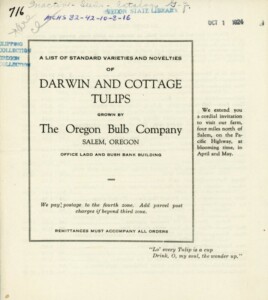
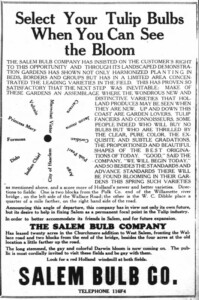
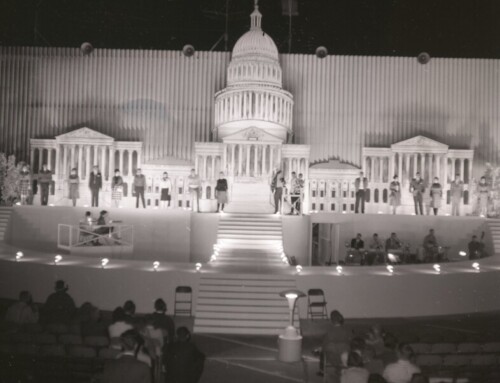
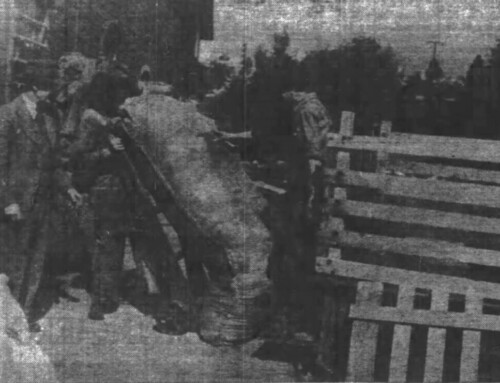
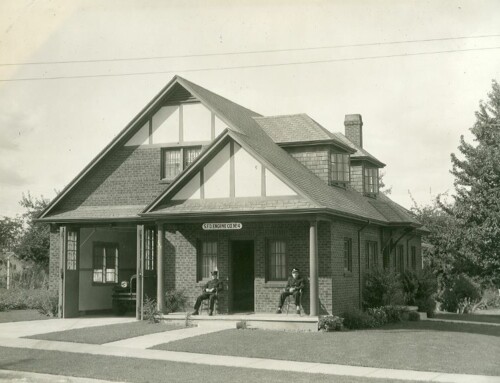
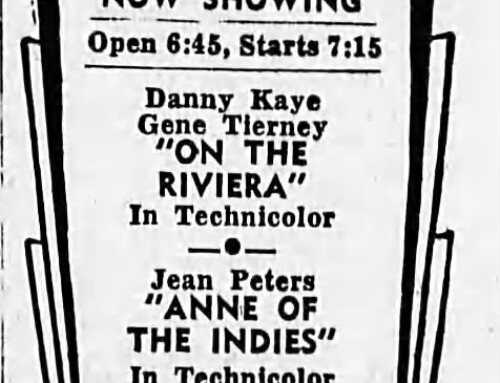
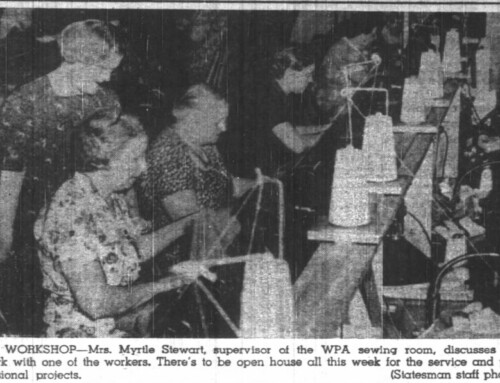
Leave A Comment